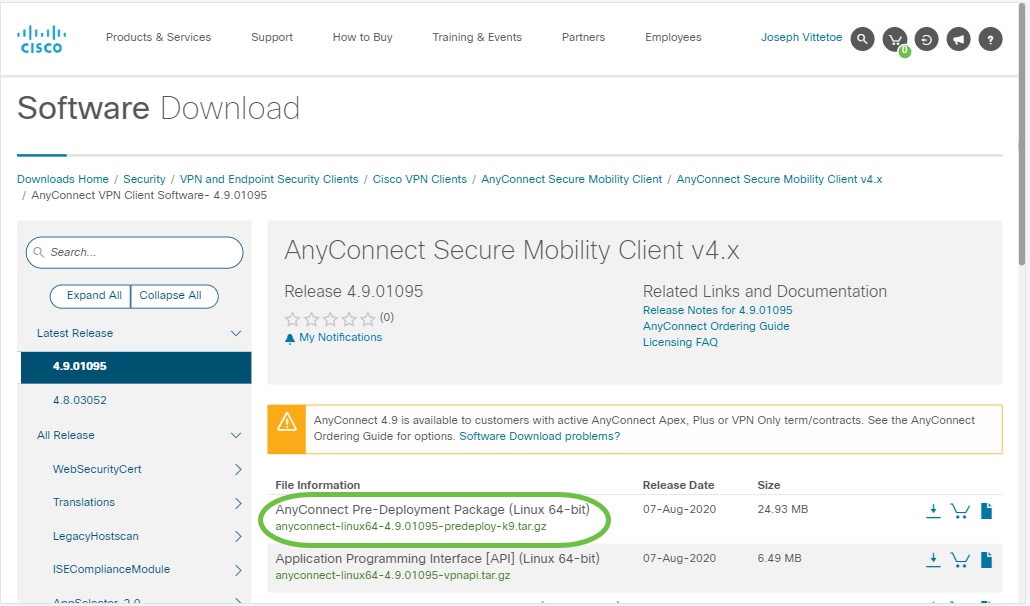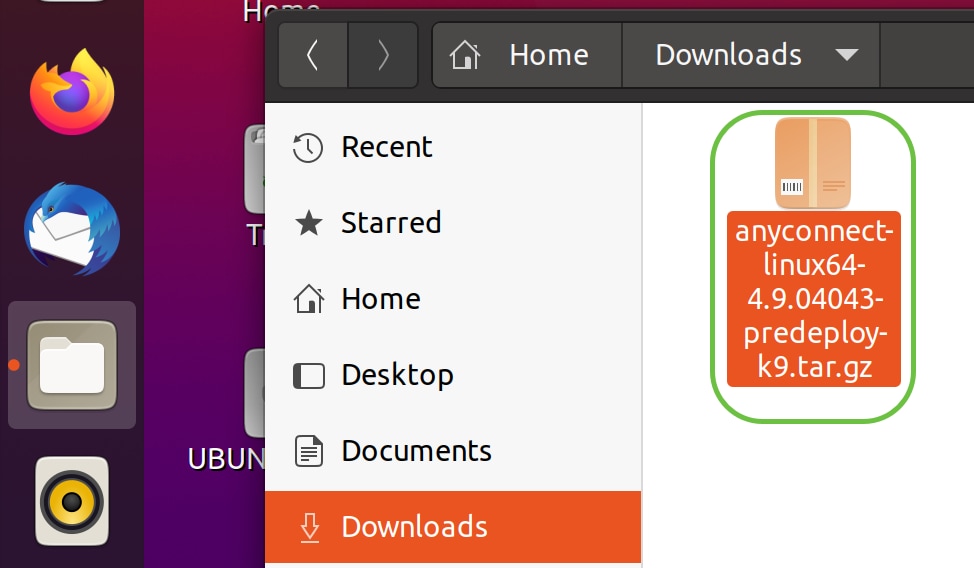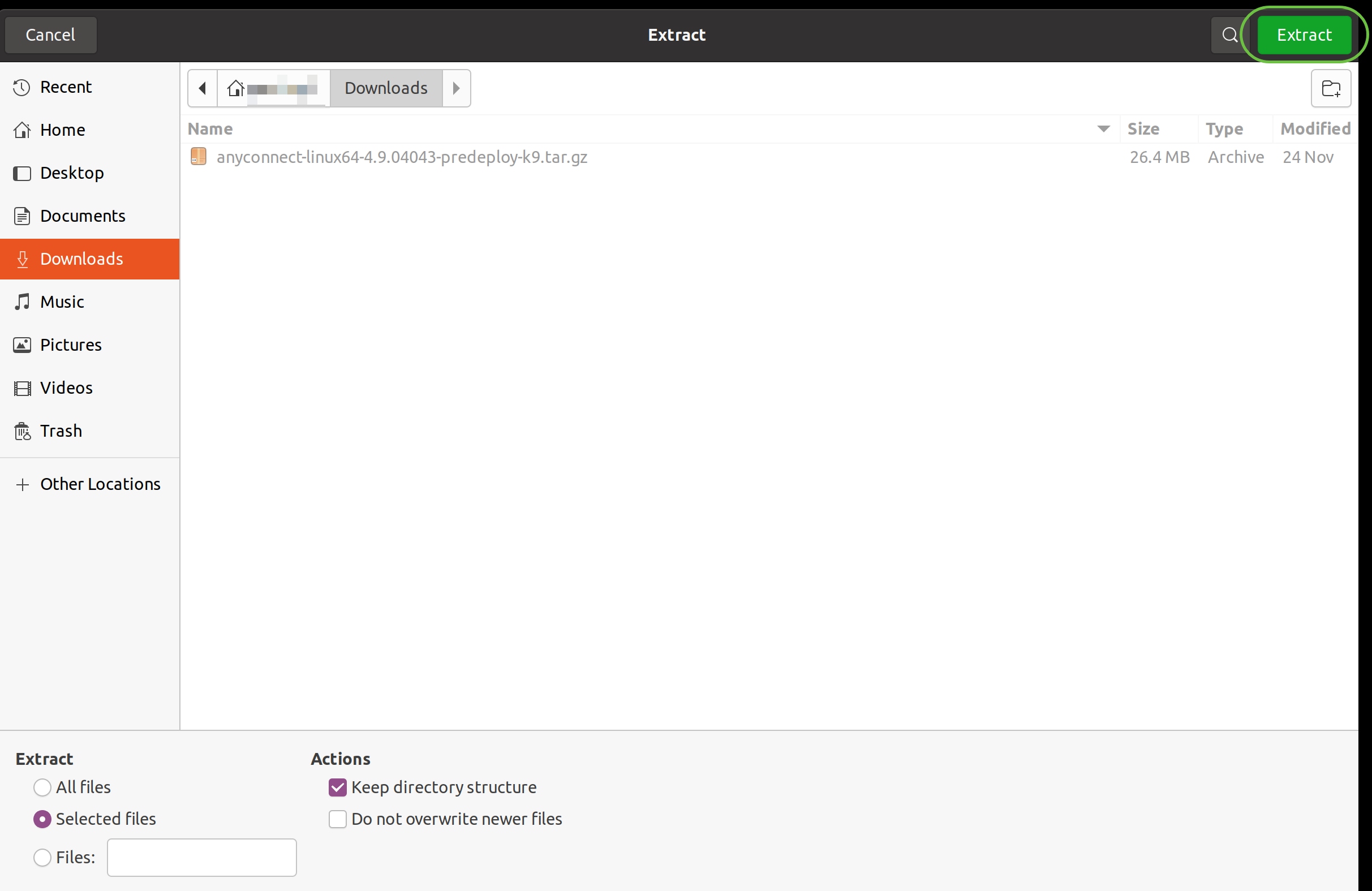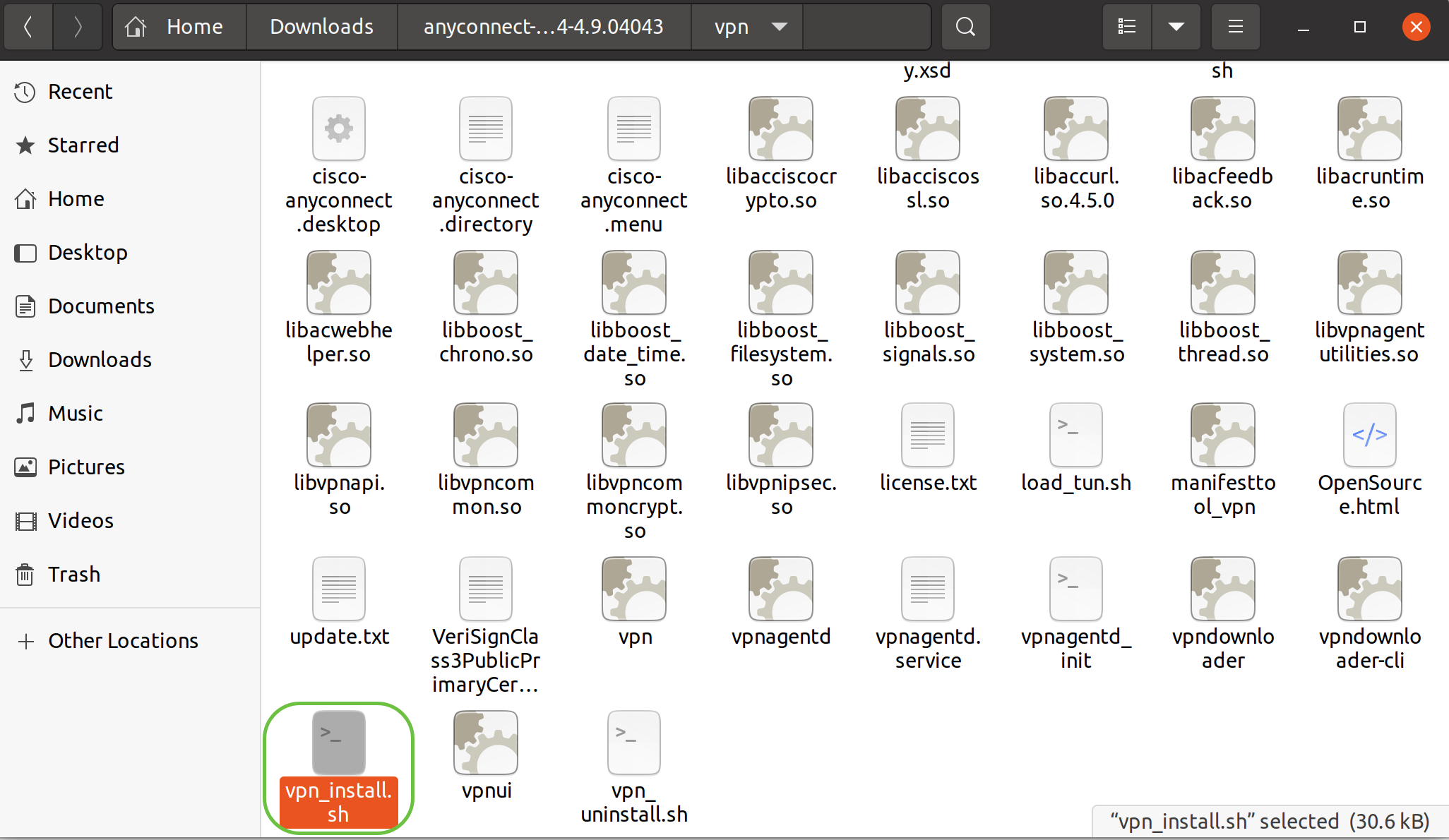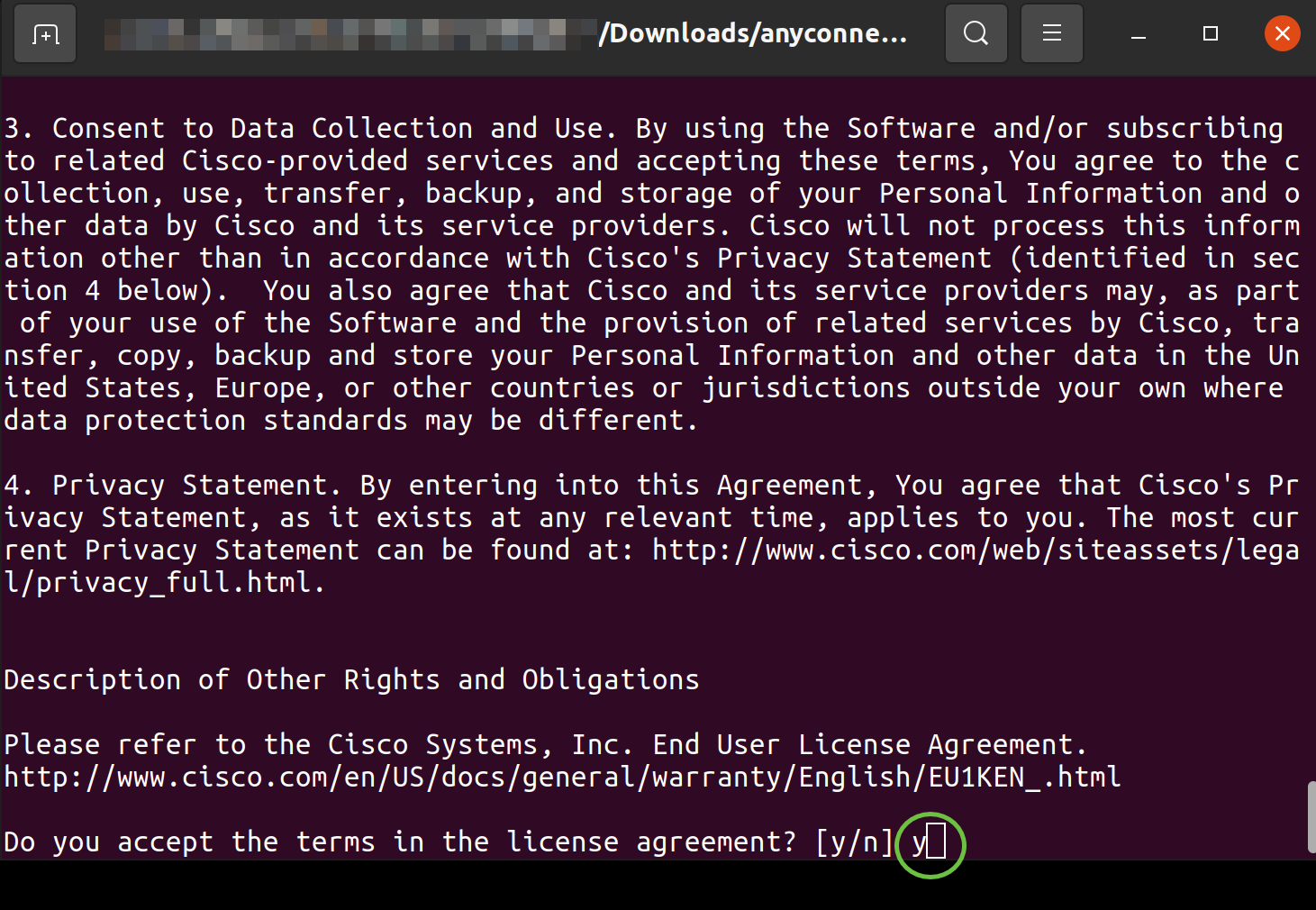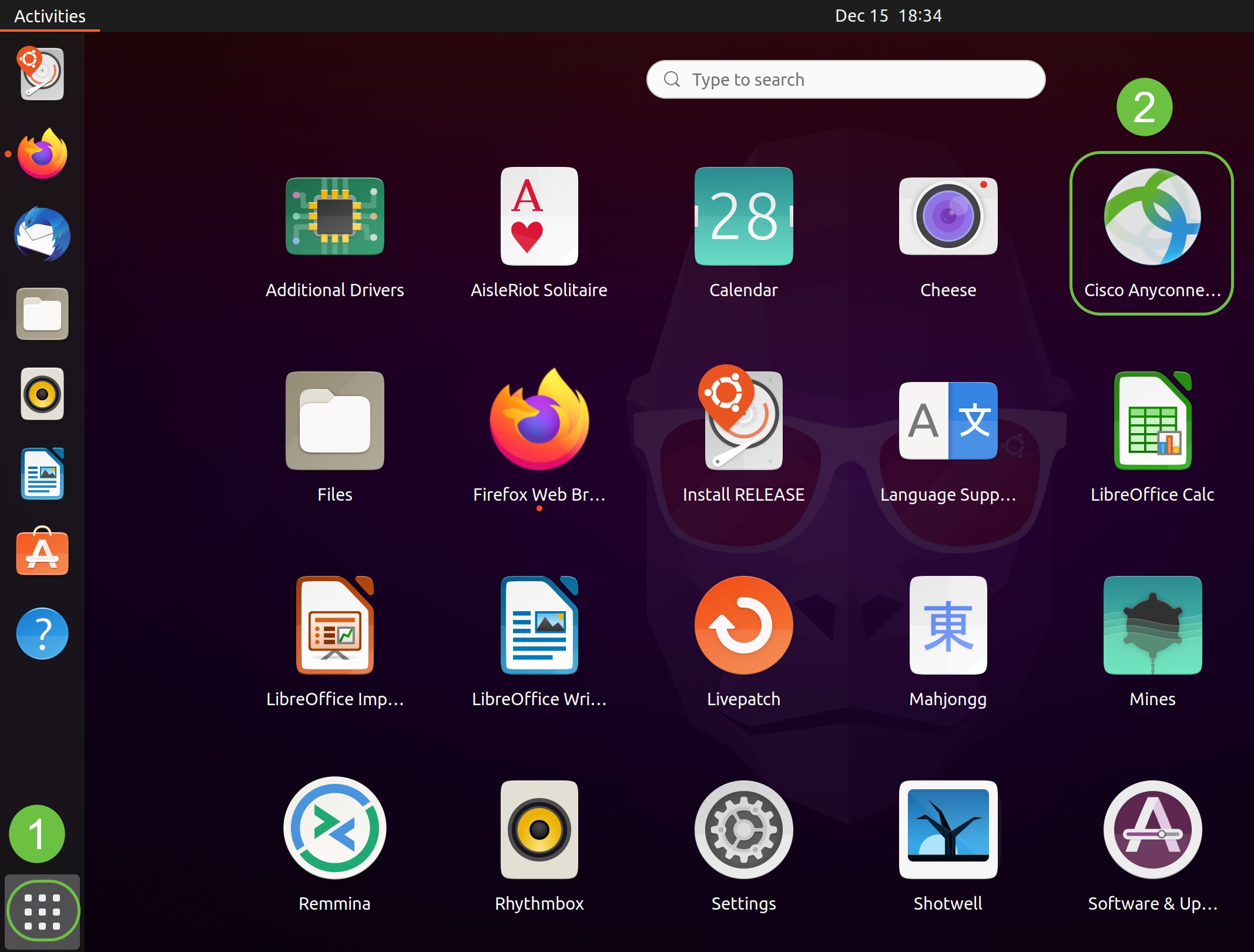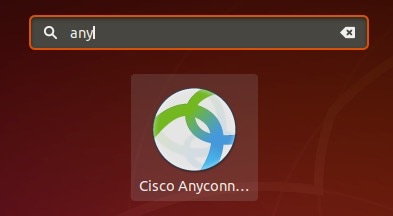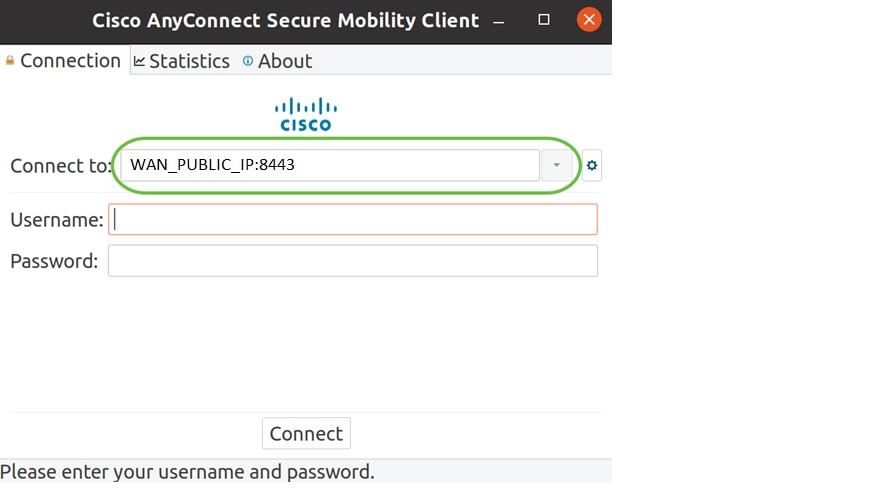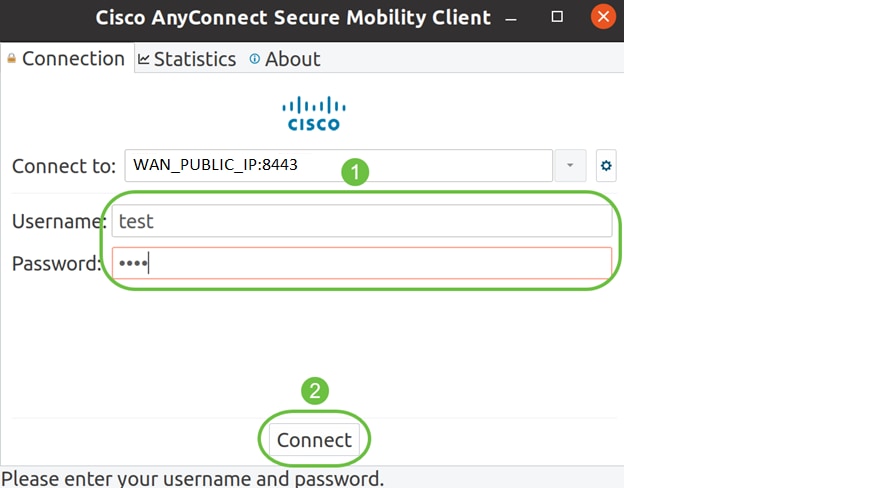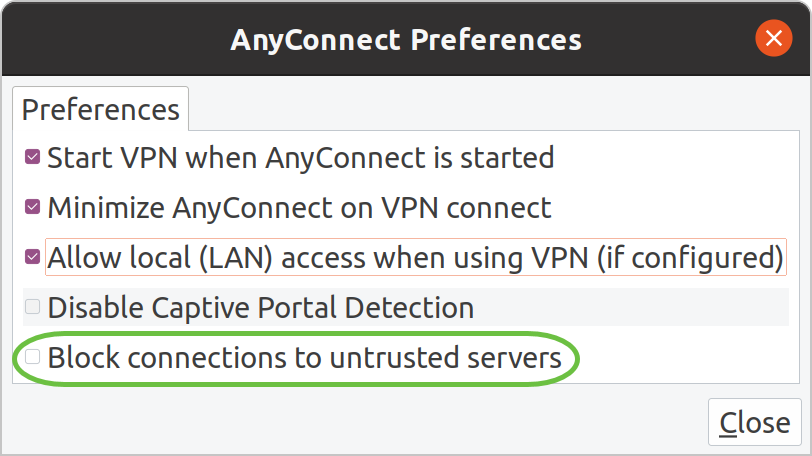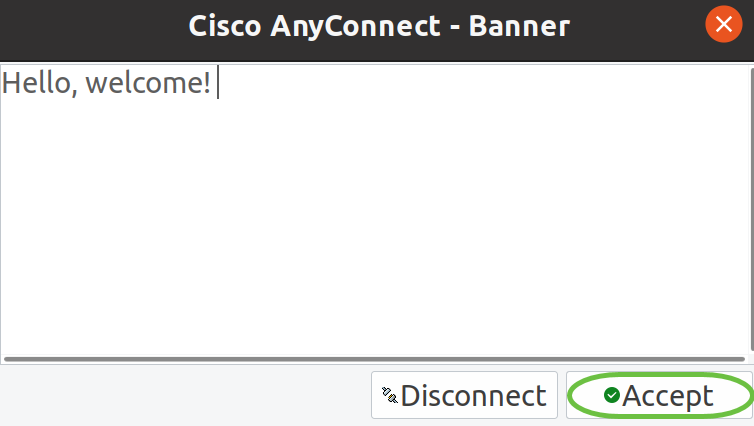- How to Install Cisco AnyConnect VPN Client on Ubuntu Linux
- Install Prerequisites
- Install AnyConnect VPN Client
- Install DART
- Installing and Using AnyConnect on Ubuntu Desktop using the User Interface
- Objective
- Introduction
- AnyConnect Software Version
- Table of Contents
- Installing AnyConnect Secure Mobility Client v4.9.x
- Prerequisites
- Check these other articles out!
- Applicable Devices | Software Version
- Licensing Information
- Step 1
- Step 2
- Step 3
- Step 4
- Step 5
- Step 6
- Step 7
- Step 8
- Using AnyConnect Secure Mobility Client v4.9.x
- Step 1
- Step 2
- Step 3
- Step 4
- Step 5
- Step 6
- Conclusion
- Cisco AnyConnect Client
How to Install Cisco AnyConnect VPN Client on Ubuntu Linux
Cisco AnyConnect VPN software allows remote users and employees to securely connect to a Cisco VPN gateway in an enterprise environment.
Employees use the Cisco AnyConnect Secure Mobility Client to establish connectivity to a Cisco SSL VPN server. The connected users or employees are granted access to internal resources if authentication is approved.
This is a widely used and popular VPN server within enterprises. If you’re a Linux user who needs help installing and using AnyConnect, this brief tutorial will show you how.
It shows you how to download and install AnyConnect using Ubuntu 18.04 or 16.04 desktop computers.
When you’re ready to install AnyConnect, follow the steps below:
First, you must be aware that not everyone can download the Cisco AnyConnect VPN client. The software is available to customers with active AnyConnect Apex, Plus, or VPN Only terms/contracts.
Your system/network administrator(s) may have to get a login to Cisco’s portal and download the software for you. or provide you log in to get into the portal.
AnyConnect download location is at the link below:
Install Prerequisites
Some packages will need to be installed before installing AnyConnect. To do that, run the commands below:
sudo apt-get update sudo apt-get install lib32z1 lib32ncurses5
Install AnyConnect VPN Client
After installing the packages above, download the AnyConnect file from its Download location.
Once you have downloaded the AnyConnect VPN tarball, double-click to extract the folder downloaded folder or use the commands below to extract, the current file should be named: anyconnect-linux64-4.7.03052-predeploy-k9.tar.gz.
By default, the file will be downloaded in your home folder ( /home/user/Downloads ), but typically the last used directory of the browser is where automatic downloads are placed.
Run the commands below to extract the downloaded file if you cannot double-click to extract it.
tar xvf anyconnect-linux64-4.7.03052-predeploy-k9.tar.gz
After extracting, open the newly-extracted folder to find the VPN folder. Change into the VPN folder.
Right-click the vpn_install.sh file.
And select Run.
Use the GUI App to install the Cisco AnyConnect VPN client at the root level.
If you can’t install it via the GUI app, run the commands below to install it.
That will install the Cisco AnyConnect VPN client for you.
Install DART
To install Dart, follow the steps below:
First, open the Dart. Folder inside the newly-extract and connect folder.
Right-click the dart_install.sh file.
Then select Run.
Use the GUI App to install the Cisco AnyConnect Diagnostic and Reporting Tool.
If the GUI installation doesn’t work, run the commands below to install it.
That should install AnyConnect for you, including DART. After that, the Cisco AnyConnect Secure Mobility Client should be ready to use.
Now, you have to launch it and connect to the VPN gateway.
You may also like the post below:
Richard W
I love computers; maybe way too much. What I learned I try to share at geekrewind.com.
Installing and Using AnyConnect on Ubuntu Desktop using the User Interface
The documentation set for this product strives to use bias-free language. For the purposes of this documentation set, bias-free is defined as language that does not imply discrimination based on age, disability, gender, racial identity, ethnic identity, sexual orientation, socioeconomic status, and intersectionality. Exceptions may be present in the documentation due to language that is hardcoded in the user interfaces of the product software, language used based on RFP documentation, or language that is used by a referenced third-party product. Learn more about how Cisco is using Inclusive Language.
Objective
The objective of this article is to guide you through installing and using AnyConnect VPN Client v4.9.x on Ubuntu Desktop version 20.04 using the User Interface (UI).
Introduction
AnyConnect Secure Mobility Client is a modular endpoint software product. It not only provides Virtual Private Network (VPN) access through Secure Sockets Layer (SSL) and Internet Protocol Security (IPsec) Internet Key Exchange version2 (IKEv2) but also offers enhanced security through various built-in modules.
AnyConnect Software Version
Table of Contents
Installing AnyConnect Secure Mobility Client v4.9.x
This toggled section provides details and tips for beginners.
Prerequisites
- You need to purchase client license(s) from a partner like CDW or through your company’s device procurement. There are options for 1 user (L-AC-PLS-3Y-S5) or packets of licenses including one year for 25 users (AC-PLS-P-25-S). Other license options available as well, including perpetual licenses. For more details on licensing, check out the links in the Licensing Information section below.
- Download the latest version of firmware available for your router.(Click here for step-by-step instructions on this process.)
- Ubuntu 20.04 (LTS), 18.04 (LTS), and 16.04 (LTS) .
Check these other articles out!
Applicable Devices | Software Version
Licensing Information
AnyConnect client licenses allow the use of the AnyConnect desktop clients as well as any of the AnyConnect mobile clients that are available. You will need a client license to download and use the Cisco AnyConnect Secure Mobility Client. A client license enables the VPN functionality and are sold in packs of 25 from partners like CDW or through your company’s device procurement.
Want to know more about AnyConnect licensing? Here are some resources:
Step 1
Open a web browser and navigate to the Cisco Software Downloads webpage.
Step 2
In the search bar, start typing ‘Anyconnect’ and the options will appear. Select AnyConnect Secure Mobility Client v4.x.
Step 3
Download the Cisco AnyConnect VPN Client. Most users will select the AnyConnect Pre-Deployment Package (Linux 64-bit) option.
The images in this article are for AnyConnect v4.9.x, which was latest version at the time of writing this document.
If you purchased a license and you are unable to download AnyConnect, call +1 919-993-2724. Select option 2. You will need to know your Cisco ID (the one you use to log into Cisco.com) and the sales order number when you call. They will get that situation all straightened out.
Step 4
Navigate to the folder where you have downloaded the AnyConnect Client Package.
Step 5
The initial download is a tarball archive (*.TAR, several files packed into one), which must be extracted. To extract the files, right- click on the AnyConnect archive and choose Open with Archive Manager. Click Extract.
Step 6
You will see a notification once the extraction is completed. Click Close.
Step 7
Locate the vpn_install.sh file in the extracted folder.
To run the AnyConnect install script, open a Linux Terminal by pressing Ctrl+Alt+T on your keyboard.
Type ‘sudo ./vpn_install.sh’. This will begin the installation process. For more details on the ‘sudo’ command, click here.
Step 8
Accept the terms in the license agreement to complete the installation by typing ‘y’.
Using AnyConnect Secure Mobility Client v4.9.x
Step 1
To access the AnyConnect app, click on the start icon (appears as nine dots on the lower left corner). Choose the Cisco Anyconnect app.
Alternatively, press Super+A (Super key is the windows icon key) on your keyboard to bring up the search bar. Start typing ‘Anyconnect’ and the app will appear.
Step 2
Click on the AnyConnect Secure Mobility Client icon.
Step 3
Enter the IP Address or Hostname of your desired server followed by the port number.
For RV340 family, the default port number is 8443.
Step 4
Enter your Username and Password in the fields provided. Click Connect.
Step 5
Some connections may not be secure using a trusted SSL certificate. By default, AnyConnect Client will block connection attempts to these servers.
Uncheck Block connections to untrusted servers under Preferences to connect to these servers.
Step 6
As soon as the connection is established, the login Banner will appear. Click Accept.
You will also see notification that the Cisco AnyConnect Secure Mobility Client is Connected.
Conclusion
There you have it! You have now successfully learned the steps to install and use the Cisco AnyConnect Secure Mobility Client v4.9.x on Ubuntu Desktop using the UI.
Cisco AnyConnect Client
Cisco AnyConnect Client — это VPN-клиент для подключения к серверу Cisco SSL VPN. Как сказано на сайте Cisco — «предоставляет сотрудникам возможность работать в любое время и в любой точке земного шара, не только на корпоративных ноутбуках, но и на персональных мобильных устройствах».
Скачиваем AnyConnect и извлекаем из архива
$ wget http://ttcit.net/download/linux/anyconnect-linux64-4.6.03049-predeploy-k9.tar.gz $ tar xzvf anyconnect-linux64-4.6.03049-predeploy-k9.tar.gz
Смотрим, что было в архиве
$ cd anyconnect-linux64-4.6.03049/ $ ls dart nvm posture vpn
Переходим с директорию vpn и запускаем скрипт установки
Во время установки нужно принять лицензионное соглашение:
Do you accept the terms in the license agreement? [y/n] y You have accepted the license agreement. Please wait while Cisco AnyConnect Secure Mobility Client is being installed. Starting Cisco AnyConnect Secure Mobility Client Agent. Done! Можно еще установить DART с помощью скрипта dart_install.sh из директории dart , но это не обязательно.
DART (AnyConnect Diagnostics and Reporting Tool) — инструмент, с помощью которого можно собрать логи и данные, полезные для устранения проблем с установкой AnyConnect и проблем с подключением. В настоящее время доступен как отдельное приложение, так и как часть инфраструктуры AnyConnect.
Находим в списке приложений AnyConnect и добавляем его в Избранное:

Запускаем VPN-клиент и вводим IP-адрес VPN-сервера, Username и Password. Но перед соединением с VPN-сервером снимаем галочку «Block connections to untrusted servers»:

Теперь нужно установить Remmina — клиент удаленного рабочего стола. Перед установкой убедитесь, что клиент еще не установлен — у меня, на Ubuntu 18.04, приложение уже было в списке установленных.
Находим в списке приложений Remmina и добавляем в Избранное:

Запускаем RDP-клиент и добавляем новое соединение (зеленый крестик слева сверху). Вводим IP-адрес удаленного компьютера, имя пользователя, пароль, домен — и сохраняем соединение:


Есть смысл выполнить еще две настройки (иконки слева):
- Переключить в режим динамического обновления разрешения
- Переключить в режим масштабирования
Lorem ipsum dolor sit amet, consectetur adipiscing elit, sed do eiusmod tempor incididunt ut labore et dolore magna aliqua.
Lorem ipsum dolor sit amet, consectetur adipiscing elit, sed do eiusmod tempor incididunt ut labore et dolore magna aliqua.
Lorem ipsum dolor sit amet, consectetur adipiscing elit, sed do eiusmod tempor incididunt ut labore et dolore magna aliqua.
- 1С:Предприятие (31)
- API (29)
- Bash (43)
- CLI (99)
- CMS (139)
- CSS (50)
- Frontend (75)
- HTML (66)
- JavaScript (150)
- Laravel (72)
- Linux (146)
- MySQL (76)
- PHP (125)
- React.js (66)
- SSH (27)
- Ubuntu (68)
- Web-разработка (509)
- WordPress (73)
- Yii2 (69)
- БазаДанных (95)
- Битрикс (66)
- Блог (29)
- Верстка (43)
- ИнтернетМагаз… (84)
- КаталогТоваров (87)
- Класс (30)
- Клиент (27)
- Ключ (28)
- Команда (68)
- Компонент (60)
- Конфигурация (62)
- Корзина (32)
- ЛокальнаяСеть (28)
- Модуль (34)
- Навигация (31)
- Настройка (140)
- ПанельУправле… (29)
- Плагин (33)
- Пользователь (26)
- Практика (99)
- Сервер (74)
- Событие (27)
- Теория (105)
- Установка (66)
- Файл (47)
- Форма (58)
- Фреймворк (192)
- Функция (36)
- ШаблонСайта (68)

